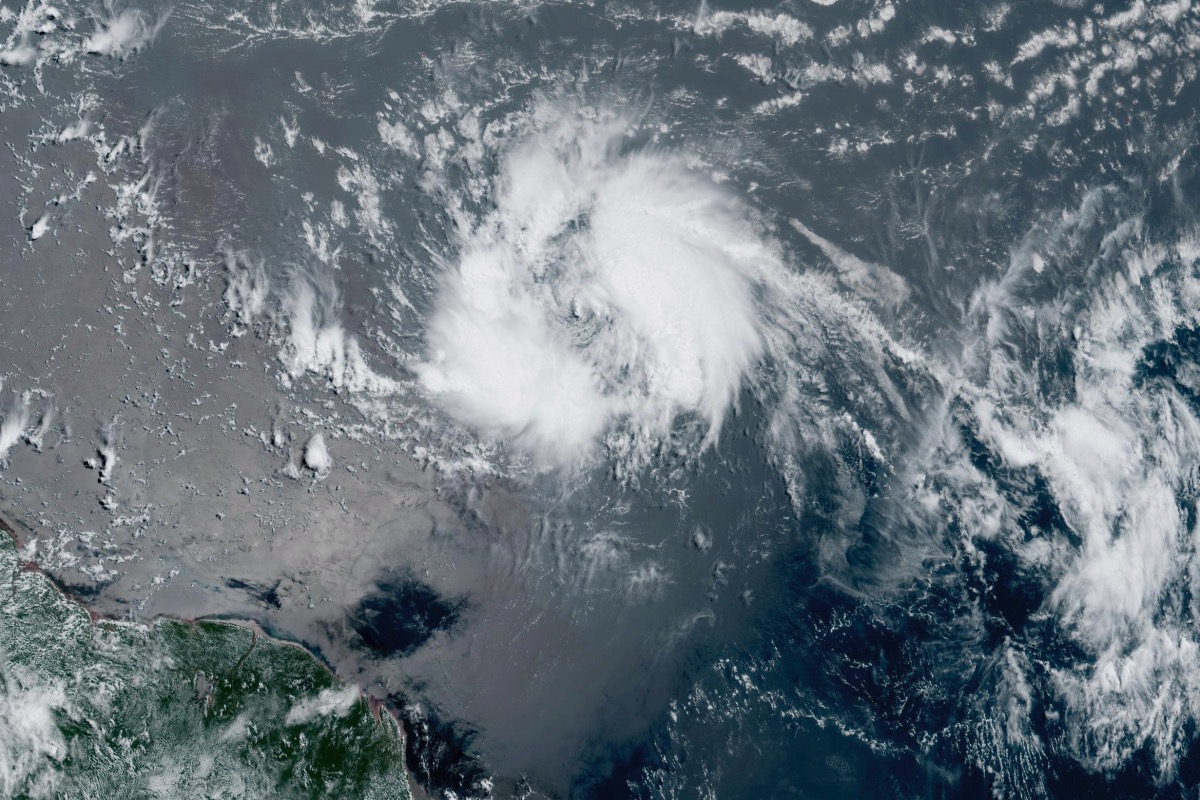

This GeoColor satellite image taken Tuesday, June 20, 2023, shows Tropical Storm Bret as it chugged toward the eastern Caribbean. (NOAA via AP)
SAN JUAN — Tropical Storm Bret, the third of the 2023 Atlantic hurricane season, formed on Monday halfway between the eastern Caribbean and Africa is expected to hit the Lesser Antilles at near-hurricane strength closer to the weekend.
While originally forecast to become a hurricane, it will remain a tropical storm but can still bring heavy rainfall, dangerous storm surges, and strong waves, according to the National Hurricane Center (NHC). Bret is expected to dissipate within five days.
While the National Weather Service (NWS) has not issued a storm watch advisory for Tropical Storm Bret for Puerto Rico and the U.S. Virgin Islands, it warned that “everyone in the Lesser Antilles, Puerto Rico, and the Virgin Islands should closely monitor updates.”
Jun 20 11 AM- Tropical Storm Bret continues to move westward across the tropical Atlantic.
La Tormenta Tropical Bret continúa moviéndose hacia el oeste a través del Atlántico Tropical. #prwx #usviwx pic.twitter.com/HV4nAEvzhS— NWS San Juan (@NWSSanJuan) June 20, 2023
The latest Bret advisory from the NHC forecasts Bret will move through the Lesser Antilles at or near hurricane strength towards the end of the week, then move through the ocean corridor between the Greater Antilles and the top of South America, grazing Venezuela and Colombia.
Bret formed the farthest east of any tropical storm on record this early in the year. It is only one of four named storms that have formed in the Main Development Region, a patch of ocean between the Caribbean and Cabo Verde where harsh storms develop from weather disturbances forming off the coast of Africa. Typically, storms do not form in the MDR until August.
The NHC is also tracking a second tropical wave following in Bret’s wake that has an 80 percent chance of becoming a tropical cyclone. If it were to form, it would be named Tropical Stormy Cindy.
“No June on record has had 2 storms form in the tropical Atlantic,” Philip Klotzbach, a meteorologist at Colorado State University, tweeted on Sunday.
While Bret is only the second storm to develop after the June 1 start date of the Atlantic hurricane season, an “unnamed” subtropical storm formed in mid-January, making Bret the third storm of the 2023 season.
Abnormally warm waters in the Atlantic have set the stage for Bret and the following storm’s intensification. Much of the North Atlantic is seeing record warmth —up to 5 degrees above normal— with human-caused climate change as one of the main drivers alongside slower winds across the region. For context, waters in the Atlantic are about as warm as they would be during peak hurricane season later in the year.
This year both Puerto Rico and the U.S. Virgin Islands have experienced record-breaking heat waves that put a strain on already damaged infrastructure that has not adequately recovered from previous hurricane seasons.
Most forecasters predicted a “normal or near normal” 2023 Atlantic hurricane season, with an average of 15 named storms, seven hurricanes, and three of those reaching Category 3 or above. However, the “unprecedented” climate conditions —abnormally warm waters in the Atlantic and a strong El Niño among them—have also produced high levels of uncertainty when compared to other years.
“Uncertainty is too high, and it’s too early to talk about future impacts,” the NOAA and NWS wrote in their latest advisory for Tropical Storm Bret.
***
Carlos Edill Berríos Polanco is the Caribbean correspondent for Latino Rebels, based in San Juan, Puerto Rico. Twitter: @Vaquero2XL


